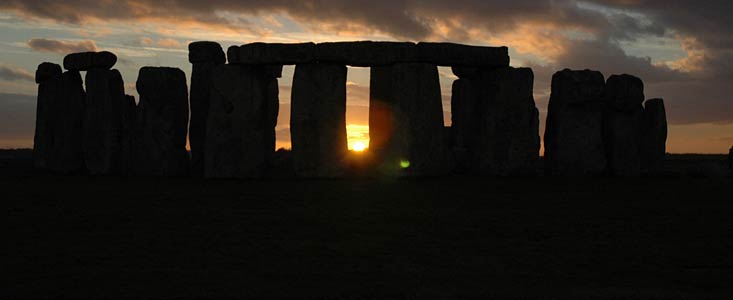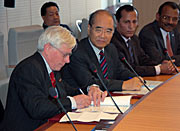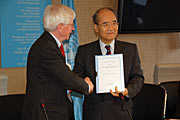- News
- Science
- Scientific Bodies
- Divisions
- Commissions
- Commission A1 Structure
- Commission A2 Structure
- Commission A3 Structure
- Commission A4 Structure
- Commission B1 Structure
- Commission B2 Structure
- Commission B3 Structure
- Commission B4 Structure
- Commission B5 Structure
- Commission B6 Structure
- Commission B7 Structure
- Commission C1 Structure
- Commission C2 Structure
- Commission C3 Structure
- Commission C4 Structure
- Commission D1 Structure
- Commission E1 Structure
- Commission E2 Structure
- Commission E3 Structure
- Commission E4 Structure
- Commission F1 Structure
- Commission F2 Structure
- Commission F3 Structure
- Commission F4 Structure
- Commission G1 Structure
- Commission G2 Structure
- Commission G3 Structure
- Commission G4 Structure
- Commission G5 Structure
- Commission H1 Structure
- Commission H2 Structure
- Commission H3 Structure
- Commission H4 Structure
- Commission J1 Structure
- Commission J2 Structure
- Commission J3 Structure
- Commission X1 Structure
- Commission X2 Structure
- Past Commission Organising Committees
- Working Groups
- Centres
- Scientific Meetings
- Rules & Guidelines
- General Assemblies
- Meeting Proposals
- Future IAU Meetings
- General Assemblies
- EC Meetings
- Officers' Meetings
- Regional Meetings
- Symposia
- Focus Meetings
- Institutional Meetings
- IAU Offices Meetings
- IAU-Sponsored Meetings
- Letters of Intent submitted for 2024
- Letters of Intent submitted for 2023
- Letters of Intent submitted for 2022
- Letters of Intent submitted for 2021
- Letters of Intent submitted for 2020
- Past IAU Meetings
- Templates
- Other Meetings
- Grants & Prizes
- Scientific Bodies
- Publications
- IAU Publications
- IAU Strategic Plan
- Symposia
- WGSBN Bulletins
- Regional Meetings
- Information Bulletins/Catalyst
- E-Newsletters
- Focus Meetings
- Transactions A
- Transactions B
- Related Publications
- GA Newspapers
- CAPjournal
- IAU Books
- Brochures
- IAU Offices
- WG Reports
- Commission Reports
- Division Reports
- Past IAU Publications
- Rules, Guidelines and Instructions for Proceedings
- Publishers
- IAU Publications
- Administration
- About the IAU
- Statutes & Rules
- IAU Policies
- IAU Executive Bodies
- IAU Secretariat
- Resolutions
- Members Administration
- Administrative Dates & Deadlines
- International Organisations Relations
- Donate to the IAU
- Training in Astronomy
- Astronomy for Education
- Astronomy for Development
- Astronomy for the Public
- Office for Astronomy Outreach
- FAQ
- Themes
- Satellite Constellations
- Astronomy in Everyday Life
- How to Report a Discovery
- Careers in Astronomy
- Defining our Place in the Cosmos
- The Constellations
- Light Pollution
- Measuring the Universe
- Near Earth Objects
- How to Participate in Astronomy Research
- Naming of Astronomical Objects
- Naming of Exoplanets
- Buying Star Names
- Naming Stars
- Pluto and the Solar System
- IAU Member Statistics
- Our Moon: the Moon
- Meteors & Meteorites: The IAU Definitions of Meteor Terms
- UNESCO-IAU Portal to the Heritage of Astronomy
- Social Media
- Past Events
- Call for Online Resources
- Astronomy@Home Awards
- Contact
iau0808 — Press Release

30 October 2008, Paris
UNESCO and the IAU sign key agreement on Astronomy and World Heritage Initiative
A Memorandum of Understanding is to be signed today, 30 October 2008, between UNESCO and the International Astronomical Union (IAU). The IAU will be integrally involved in the process of developing UNESCO’s Astronomy and World Heritage Initiative, helping to promote astronomical sites of “Outstanding Universal Value”.
The world-famous UNESCO World Heritage Convention is renowned for its work protecting and promoting sites that celebrate the heritage of humanity. Examples include the Pyramids of Giza in Egypt, the Mayan city of Chichen Itza in Mexico, and the Stonehenge in the United Kingdom.
However, astronomical heritage is currently under-represented. All too often, neglect and mistreatment cause irreversible harm. The new Memorandum will place the Astronomy and World Heritage Initiative in a better position to reverse this trend by raising awareness of the cultural importance of astronomical sites, both ancient and modern.
Adopting the successful strategy previously applied to architectural and natural sites, the new UNESCO Astronomy and World Heritage initiative will officially recognise, promote and preserve astronomical sites that are of outstanding significance to humankind. The places in question include landmarks whose design or location relate to celestial events, whether with symbolic or direct connection with astronomy. Historic sites, instruments and representations help to broaden and enhance our perception of the sky. This theme is integral to the upcoming International Year of Astronomy 2009. The initiative is therefore designated as one of the Year's key Cornerstone projects, which are being organised to increase public understanding and appreciation of astronomy throughout the coming year and around the world.
In order to fulfil its commitment to the UNESCO Initiative, the IAU has set up a new Working Group on Astronomy and World Heritage under the chairmanship of Professor Clive Ruggles, Emeritus Professor of Archaeoastronomy at the University of Leicester, UK. Ruggles, who is also Vice-President of the IAU's Commission 41 on the History of Astronomy, has already worked with UNESCO in the early stages of developing the initiative. He said: "The globalisation of human culture is proceeding at a relentless pace, and it is becoming increasingly urgent to preserve some of the more fragile aspects of our common cultural heritage. ‘Fine', you might say, ‘but why worry about astronomy in this regard?' The main reason, I think, is that every human culture has a sky, and strives to interpret what people perceive there. The understanding they develop inevitably comes to form a vital part of their fundamental knowledge concerning the cosmos and their place within it. Astronomy is not just a modern science but a fundamental reflection of how all people, past and present, understand themselves in relation to the Universe."
At present, States Parties to the World Heritage Convention may nominate sites for inscription on the World Heritage List for a variety of reasons; but until now, there have been few precedents and no guidelines for nominations relating principally to astronomy. Identifying and defining criteria that demonstrate "Outstanding Universal Value" in relation to astronomy is not a straightforward task. They must encompass a wide range of sites, from prehistoric monuments to modern observatories. Helping to establish such criteria is the IAU Working Group's top priority. As Ruggles says, "without such guidelines member states of UNESCO will have little motivation to put forward astronomical sites for the World Heritage List, since they will have very little idea of their chances of success."
The agreement between UNESCO and the IAU is designed to set the wheels in motion. As a result, astronomical heritage will become much better represented in the World Heritage List.
Notes for editors
Founded in 1919, the IAU is the world's largest professional body for astronomers, bringing together almost 10 000 distinguished astronomers from all nations of the world. Its mission is to promote and safeguard the science of astronomy in all its aspects through international cooperation. The IAU also serves as the internationally recognised authority for assigning designations to celestial bodies and surface features on them.
For more information please contact:
Prof. Clive L.N. Ruggles
University of Leicester, United Kingdom
Tel: +44-116-252-3409/2611
E-mail: rug@le.ac.uk
Dr. Anna Sidorenko-Dulom
Thematic Initiative "Astronomy and World Heritage"
UNESCO World Heritage Centre, Paris, France
Tel: +33-1-45-68-20-96
E-mail: a.sidorenko@unesco.org
Dr. Karel A. van der Hucht
General Secretary, International Astronomical Union
IAU Secretariat, Paris, France
Tel: +33-1-43-25-83-58
E-mail: K.A.van.der.Hucht@sron.nl
IAU Press Officer
Lars Lindberg Christensen
ESO ePOD, Garching, Germany
Tel: +49 89-3200-6761
Cellular: +49-173-3872-621
E-mail: lars@eso.org
IAU IYA2009 Coordinator
Pedro Russo
ESO ePOD, Garching, Germany
Tel: +49-89-3200-6195
E-mail: prusso@eso.org
Links
- IAU website: http://www.iau.org
- UNESCO website: http://www.unesco.org/
- UNESCO World Heritage Convention website: http://whc.unesco.org/
- IYA2009 website: http://www.astronomy2009.org
- Astronomy and World Heritage Initiative web pages:
http://whc.unesco.org/en/activities/19/
http://whc.unesco.org/pg.cfm?cid=281&id_group=21&s=home - Astronomy and World Heritage Initiative on the IYA2009 website: http://www.astronomy2009.org/globalprojects/cornerstones/astroworldheritage/


